Game Jolt Page || itch.io Page
From the creator of a dead world’s dream comes Sand and Rust. Though the settings are different, the two games are quite similar, not that that’s at all a bad thing. With a team of three robots at their command, players must platform their way back and forth between six regions in search of valuable pieces of scattered data, which are used both for advancing the plot and for unlocking new skills.
You only start with access to two of the three robots and the most significant difference between them becomes very apparent within the first minute. After coming out of a door and going through a pipe to enter a larger, futuristic facility, your starting robot becomes unable to progress and must make use of a blue capsule which serves as a save point as well as a place to switch robots. Upon switching, the building is revealed to not be as enormous as it first seemed, but rather that your initial robot is extremely small and the platforms which seemed to be impossibly out of reach can be landed upon in a single jump with your second robot. This is only the first example of many differences between the robots, but it’s a rather important one as there are many places which only the small robot can squeeze into and many which only the larger robots can reach. Seeing the same places from a normal perspective and from the small robot’s zoomed in perspective is also a neat aesthetic effect, especially when the small robot interacts with the environment in unique ways, such as by riding on pieces of food carried by ants or making use of the open mouths of statues as platforms to scale walls.
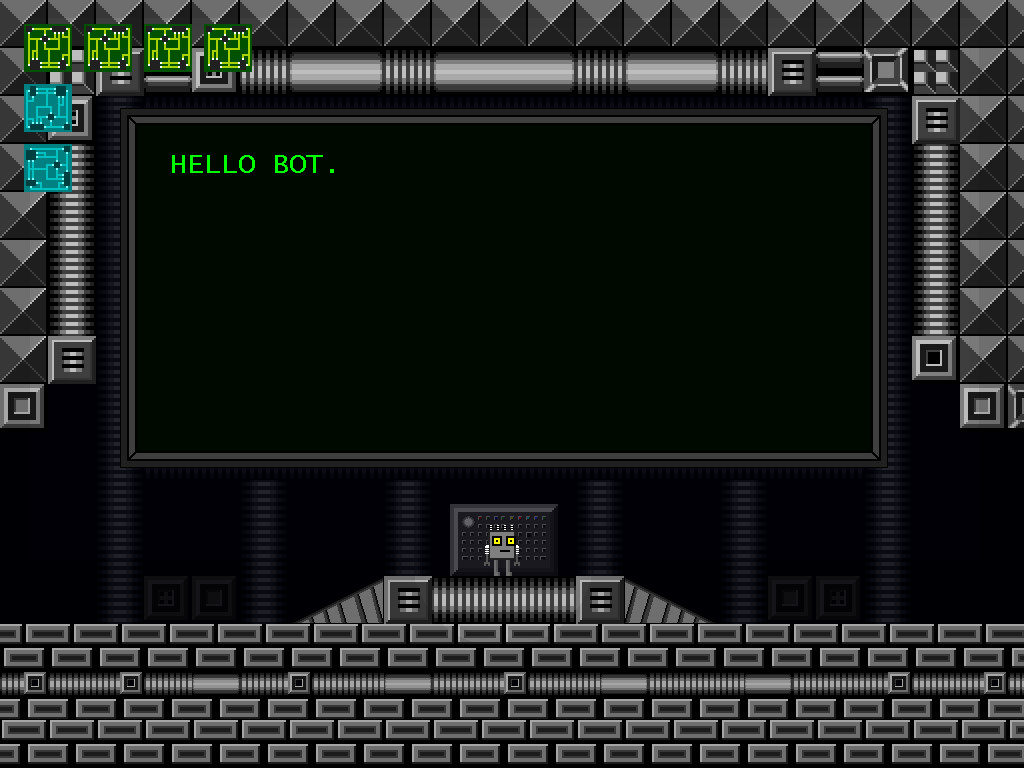
After interacting with a giant computer known as the Explorer Mind you can learn that the objective of the game is to find 30 pieces of data in order to broadcast the information back to your robotic home to prevent an imminent war between two factions. Once the basic premise is established, the rest of the hub building is opened up to you along with access to teleporters leading to all six of the other areas. Even though the ultimate goal may be to collect 30 data pieces, the actual total scattered across the game is far higher, so high that you can easily hit this number without even entering every area. Though you can technically go wherever you want to, the order in which you complete the game’s content is heavily influenced by your own upgrade decisions.
Each robot has several skills which can be unlocked by spending one or two pieces of data. Spending the data this way doesn’t count against the total needed for the broadcast and nearly every skill has at least one piece of data which it is absolutely needed for, though you will need a bit more than 30 data to unlock every skill for all three robots. These skills help to further differentiate the robots, only the small robot gets the ability to wall jump for example, but the order in which they are chosen can completely change the route you take through the game. One of the more obvious examples involves the skillset for the second robot, which I will refer to as the ‘environmental robot’ from now on to avoid confusion. Both the environmental robot and the small robot have access to a skill which allows them to safely swim in water, but after learning this skill the environmental robot then gains access to acid resistance and fire resistance skills, both of which cost two data. You definitely want to get both of these skills at some point, but the acid resistance is needed in order to access a large portion of the second region, a forest fills with pools of acid, while the fire resistance is needed in order to pass through the fire traps in the third region’s ancient temple and the clusters of fire mushrooms in the lava cave which makes up the fifth region. You could always use your first six data pieces to become resistant to water, acid, and fire as soon as possible, but this would in turn mean passive up on health upgrades (even these aren’t entirely optional as some data requires you to take a hit or two to reach), the ‘boost’ abilities for the environmental robot, which give you a temporarily speed boost and a super jump respectively, and the valuable wall jump for the small robot as well as its most useful ability – hacking.
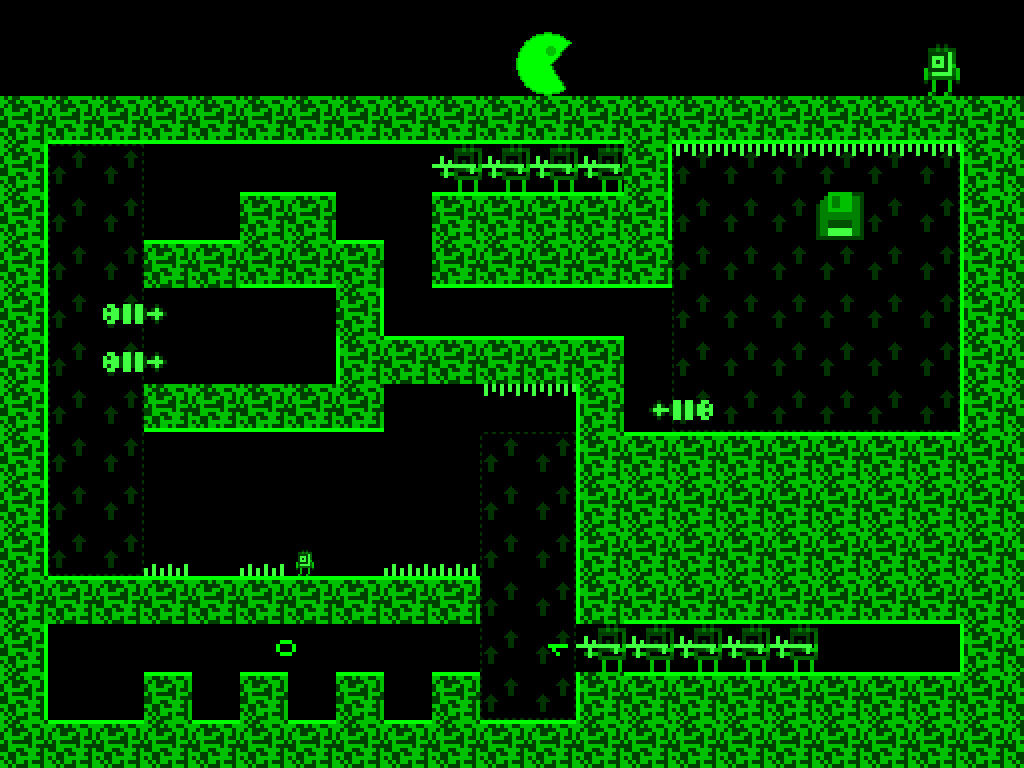
As handy as the small robot’s innate ability to crawl through small crevices may be, its true strength lies in its ability to hack into corrupted data terminals to retrieve data. Each of these terminals takes you into a green cyberspace area consisting of a single-screen room where the goal is to reach a data floppy before an angry Pac-Man creature, which serves as the timer, chomps its way across the top of the screen to a representation of your robot. These digital challenges are often much harder than the other content and none of your upgrades carry over into them other than ones specifically for hacking, but you can also instantly retry them as many times as you need to with no penalty attached (dying in other parts of the game sends you back to when you last saved).
Many of these terminal areas come with their own unique gimmicks, such as giving you two mirrored versions of your robot which you need to simultaneously navigate towards goals or increasing your speed by a ridiculous amount which causes even the slightest of touches to send the robot flying across the screen, often straight into spikes. Others still have obstacles which are impossible to overcome without specific skills, such as a wall of spikes which can be removed with Hacking upgrade and an incredibly fast Pac-Man which can be momentarily stopped with the Firewall upgrade, though it’s up to players to figure out if a challenge is actually impossible and, if so, what needs to be unlocked in order to overcome it. These hacking challenges constantly change up the rules and are a creative way to include mechanics which would be hard to make work within the more freeform world, but the one issue with them is that they completely replace exploration elements for the small robot later on; both the fifth and the sixth area have a terminal directly next to a save point and nothing else for the small robot to do, which is a shame since the wall-jumping challenges and the hunt for small paths hidden within the environment are consistently enjoyable activities.
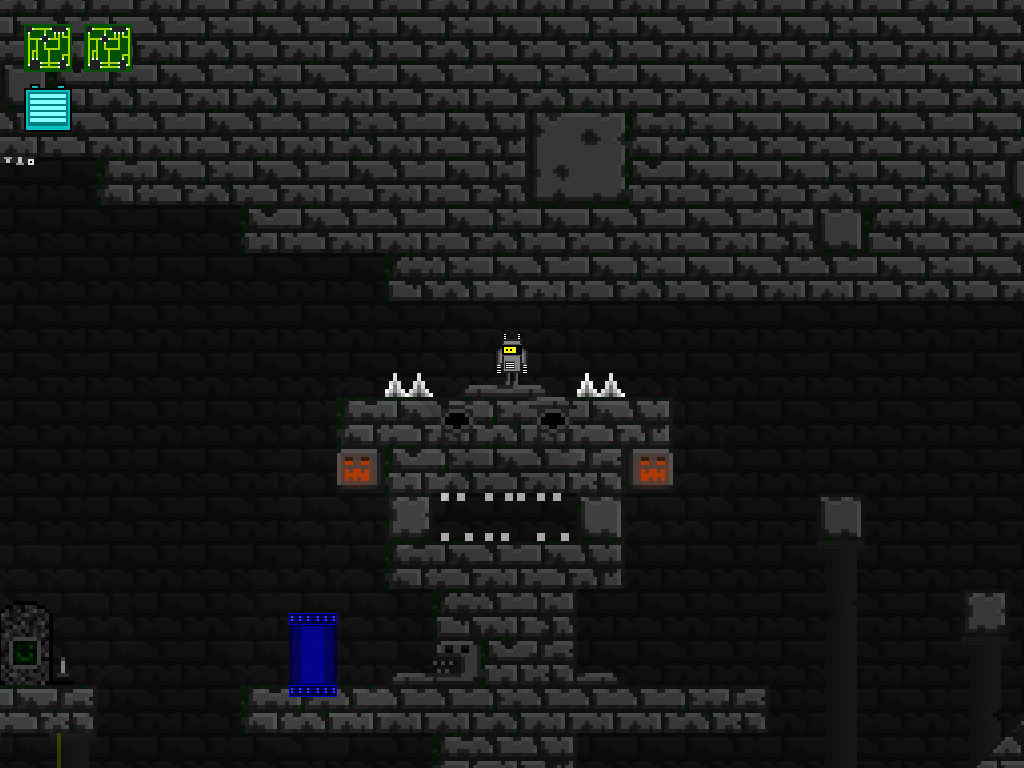
You can see a holographic image of the third robot slowing being built as you make progress, but it isn’t until after you collect your 19th piece of data that it unlocks. This final robot is the same size as the environmental robot and it has access to a jetpack. Other than a single health upgrade and a ‘self-destruct’ upgrade which does exactly what its name implies, the jetpack robot only has access to a set of three skills which increase its fuel efficient and recharge rate and boost its propulsion, so with less health than the other two robots and no environmental protection at all this useful robot is incredibly fragile. As it lacks a normal jump, the jetpack robot is not ideal for precision platforming, but the impressive amount of horizontal and vertical space which it can fly through before needing to land allows it to reach many collectibles which the other robots can’t and it often can serve as an alternative choice to the environmental robot for vertical platforming challenges; the jetpack robot can simply fly through most vertical corridors without the need to perform precision platforming, but its fragility means that even with the health upgrade taking a single hit from any hazard will likely destroy it.There are a few spots where the jetpack robot seems like it may be a bit too useful, such as outside of the airships in the fourth region where corridors filled with traps can simply be flown over with no risk or penalty attached, but overall it is balanced out by its lack of health and by being locked out of several segments by unavoidable pools of water or acid.
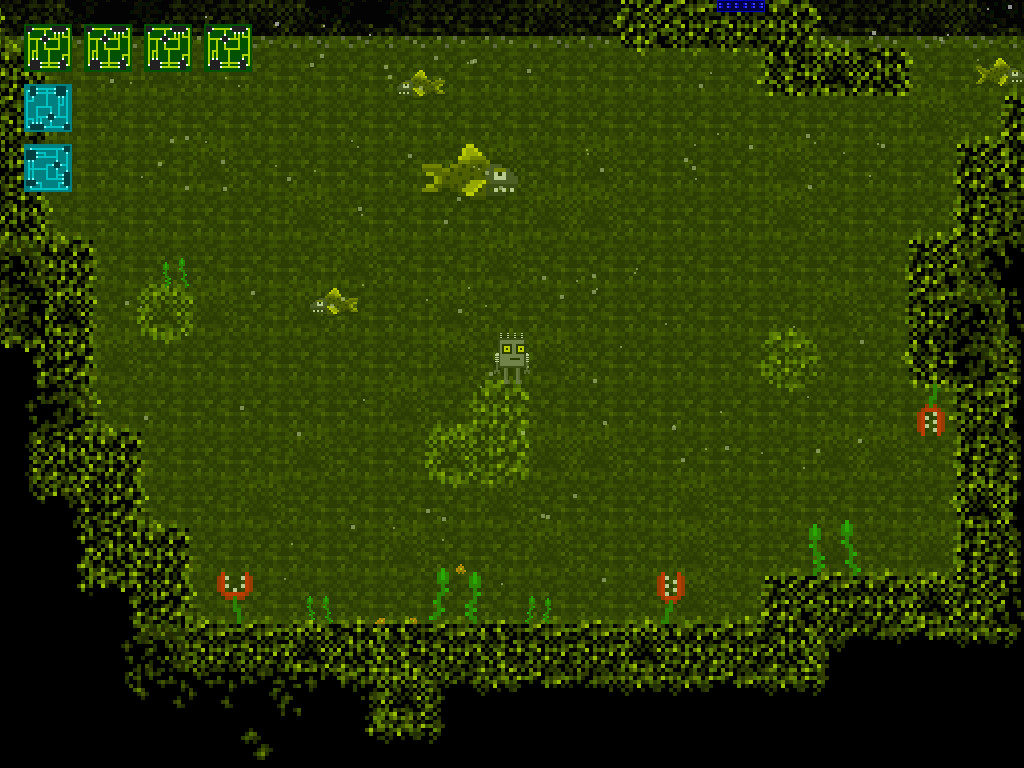
Each area is small, but very compact. Data is scattered about everywhere and you’re bound to come across multiple collectibles which are just out of reach until you buy the appropriate upgrade. Many collectibles, especially in the lower-numbered regions, also require you to combine abilities, such as one floppy which is positioned behind a string of flamethrowers which requires multiple health upgrades, fire resistance, and the speed boost on the environmental robot in order to retrieve it and get back out alive. These aren’t all just lock-and-key puzzles either as upgrades generally just give you the ability to take on a challenge in the first place; acid resistance grants access to a lake filled with dangerous fish, fire resistance only reduces the damage from most sources of fire instead of completely negating it, and wall jumping challenges are still often filled with spikes and tricky jumps. Several of the regions place their entrance in the center, giving players free control over which direction they choose to explore in first, though even ones which start in a more linear fashion tend to quickly branch out.
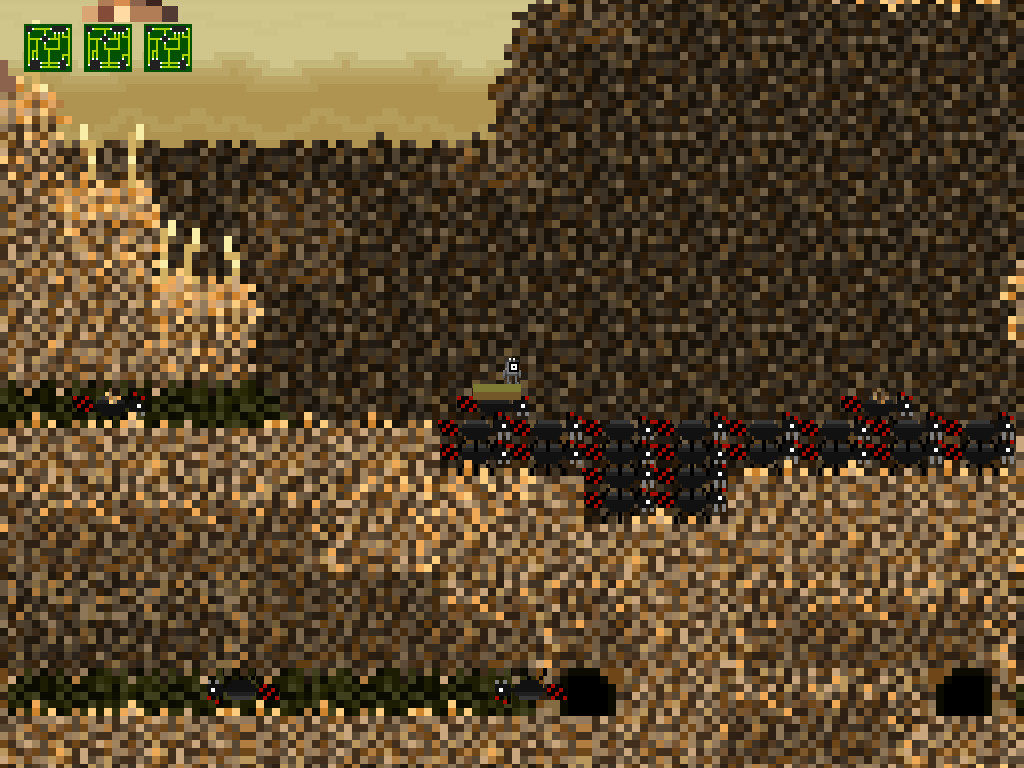
Of the six areas to explore, the first three are the strongest. The very first of these areas is a savanna which focuses heavily on contrasting the sizes of the two default robots; insects which are harmless to the environmental robot can cause damage to the small robot and meerkats which hide from the environmental robot can be used as platforms for the small robot. The forest which makes up the second area looks great, making it a particularly noticeable improvement over the graphics in a dead world’s dream, and it is the most densely packed region with paths leading in all four directions from the start and many looping and branching paths along the way. Meanwhile, the ancient temples of the third region are filled with challenges for all three robots, many of which require specific upgrades and/or some precise platforming in order to complete. Even the home base itself is filled with secret paths cleverly hidden within the environment, making it an important location for far more than just teleporting and upgrading purposes.
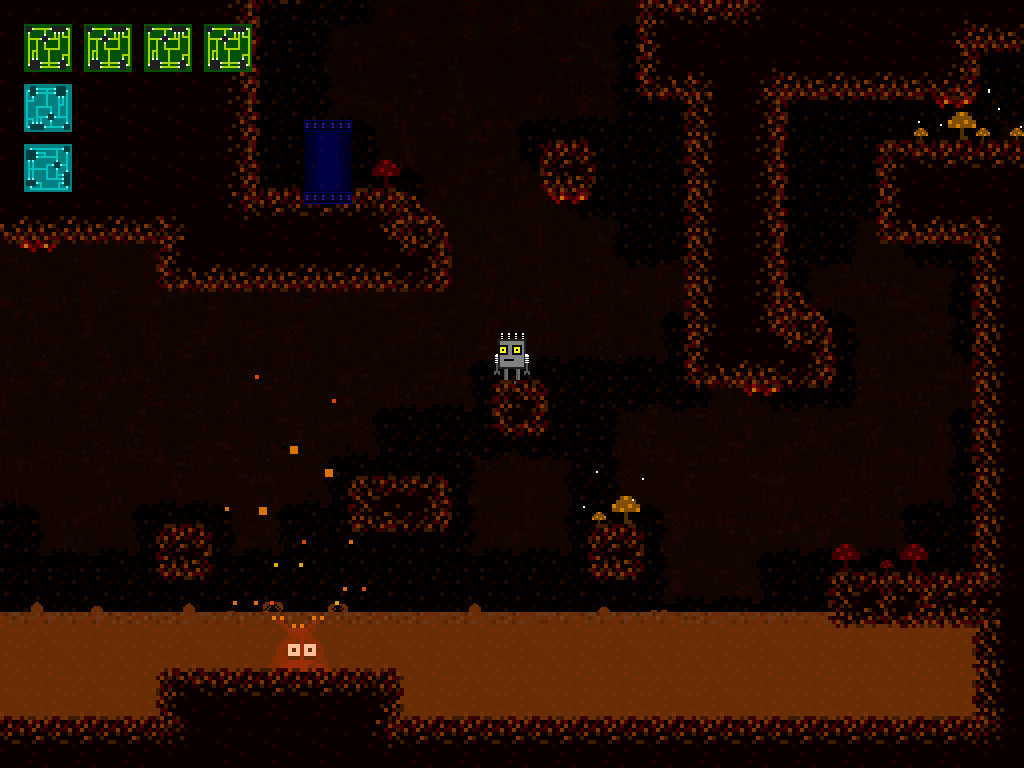
The latter three regions aren’t bad either, but they do have shortcomings which make them inferior to the first three. The fourth region consists of a pair of airships which in turn have both an interior and an exterior to explore and they serve as a great way to introduce players to the jetpack robot, which players are likely to gain access to near the end of the third region or within the fourth region itself if they are exploring in numerical order. Unfortunately, this region also suffers from severe lag in the larger airship’s interior whenever flamethrowers activate, making what would otherwise be a great platforming challenge into a rather miserable slog; the developer has stated that they will look into trying to fix this issue within the next month, but for now the lag makes this portion of the region the worst part of the game. The lava caves of the fifth region feel much sparser than the earlier regions with nothing for the small robot to do beyond accessing a single terminal and a handful of platforming challenges for the other robots with the right side of the region in particular being completely trivialized by the jetpack robot so the region as a whole simply feels underutilized. As to the sixth region, it consists of a tower which serves as a single, extensive challenge for the environmental robot and a far more simplistic challenge for the small robot and the jetpack robot; it doesn’t feel sparse or underutilized the way the lava caves do, but it’s more accurate to think of it more as a specific challenge rather than an entire region.

Actually finishing Sand and Rust is as much of a freeform experience as the rest of the game. Of its five endings, only two are directly tied to the initial goal of sending a broadcast. Two others require quite a few upgrades to access, so you’ll still need to have found many of the collectibles, but they are tied to a set of secret challenges which can be difficult to find and are far more difficult to actually complete. As to the final ending, it is tied to a set of late-game riddles which serve as a scavenger hunt of sorts. These riddles each point to a very specific location and many of them are clever enough that they can take a while to figure out so following this trail of clues is an immensely satisfying scavenger hunt which is made even better by the fact that it requires players to make use of the special skills of all three robots along the way.
Sand and Rust is an all-around great platformer which allows players to explore its environments in an incredibly freeform manner. It’s short enough that it can definitely be finished in a single session and the lag in the fourth area along with the lack of much to actually do in the fifth area are stumbling blocks for it, yet the overall quality of its content is high. If you enjoyed a dead world’s dream or if you like nonlinear 2D platformers in general, you should definitely check this game out.